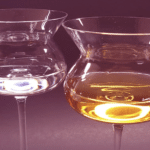RUM 101: The Essential Guide to Understanding Rum
Rum, a spirit as diverse as the cultures that produce it, is more than just a beverage; it’s a journey through history, geography, and unparalleled craftsmanship.
Today, on National Rum Day, let’s delve into this fascinating world, from its humble beginnings to the complex processes that shape its character.
The Essence of Rum
At its core, rum is a distilled spirit crafted from fermented sugarcane byproducts. Whether it’s the rich molasses, the sweet cane juice, or the turbinado sugar, each source imparts distinct flavors to the final product. This inherent versatility is what makes it such a captivating spirit.
A bit of history… Where does it come from?
The Atlantic Ocean, where Spaniards sought out new opportunities beyond the horizon. In 1492, Christopher Columbus stumbled upon Hispaniola and Cuba, with Puerto Rico “Boringueña” following in 1493, and Venezuela in 1498.
These lands shared a common thread: the introduction of sugarcane, which sparked a wave of Spanish exploration into various industries, including distillation.
The pursuit of the perfect “Brandy” led to the emergence of sugarcane distillation in these countries. Initially known as “tafia” or “aguardiente”, this potent beverage quickly gained a reputation for inducing euphoria, revolutionizing the drinking habits of the New World.
Meanwhile, in the Antilles, a new sensation was brewing. The streets of Barbados buzzed with the name “Rumbullion”, which later evolved into the term we now know as Rum. It is believed that experts from Brazil arrived in Barbados, bringing with them their knowledge of cachaça production. Combined with the rich sugarcane molasses of Barbados and the aging process in barrels, this resulted in the creation of a tantalizing amber-colored beverage with a nuanced flavor – rum was born!
With its elegance and distinctive taste, the beverage became a beloved distillate throughout Latin America and the Caribbean, evolving into various iterations, each with unique characteristics.
Diving into the sip: regions, flavors, and styles
From the sunny Caribbean islands to the bustling cities of Latin America, rum has found a home in diverse cultures. Each region imparts a unique character to the spirit, resulting in a wide range of flavors and styles.
- Caribbean Rum: Renowned for its robust and flavorful profile, this variant is often aged in oak barrels for a smooth finish. Yet, this could vary per Caribbean island and its culture.
- Latin American Rum: Known for its sweetness and versatility, this one is widely used in cocktails and as a sipping spirit.
- Other Regions: While the Caribbean and Latin America dominate the world of this type of liquor, countries with access to sugarcane like Fiji, India, the Philippines, and Australia are also producing noteworthy rums.
The Art of Distillation
Two primary methods dominate the industry: pot stills and column stills.
Pot stills, often associated with smaller-scale production, produce rums with complex flavors and aromas.
Column stills, on the other hand, create cleaner, lighter spirits. Many modern distilleries employ a combination of both to achieve the desired character.
The Influence of Aging
Aging is where rum truly develops its depth and complexity. Oak barrels, once used for bourbon or other spirits, impart flavors like vanilla, caramel, and spice.
The length of aging, the type of barrel, and the climate all play a crucial role in shaping the final product.
Rum Styles: A World of Flavors
The world of rum is incredibly diverse, offering a range of styles to suit every palate.
From the light and clean profiles of Puerto Rican rums to the rich and complex flavors of Jamaican rums, there’s a rum for every occasion. Let’s explore some of the most popular styles:
- Light Rum: Perfect for cocktails, with a clean and crisp taste.
- Gold Rum: A versatile option, suitable for both sipping and mixing.
- Dark Rum: Rich and full-bodied, often used in cooking and baking.
- Spiced Rum: Infused with flavors like cinnamon, vanilla, and clove, offering a warm and comforting taste.
- Rhum Agricole: Made from fresh sugarcane juice, this French Caribbean style is known for its grassy and earthy notes.
The Future of Rum: A Promise of Growth
The rum industry is experiencing a renaissance, with craft distilleries and innovative producers pushing the boundaries of flavor and experimentation.
The Market Watch Report pointed out in its 2023 issue that rum brands need to focus on taking care of the environment, innovating in tasting, and telling compelling stories about their processes to educate the audience and consumers.
In this way, the rum industry, at least in the US, can experience exponential growth—a renaissance.
Rum is a wonderful way to dive into the history of the world around us. A spirit that enhances. A promise for the future. Once you understand it, you won’t let it go.
Elevate your rum experience; join us as we explore the fascinating world of this spirit! Delve into specific rum styles, cocktail recipes, and the stories behind the iconic brands that have shaped this beloved spirit. Don’t miss it; subscribe to our newsletter!





